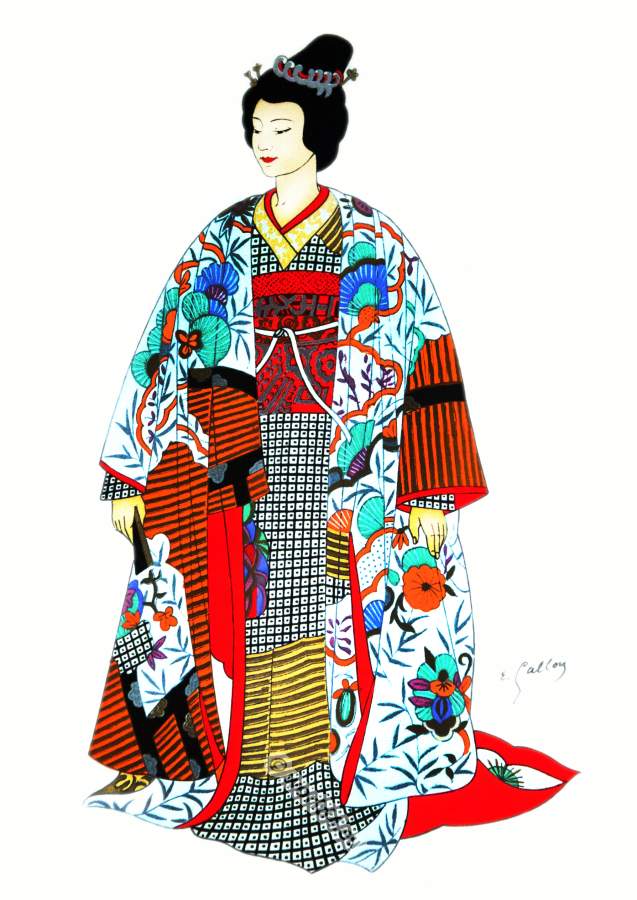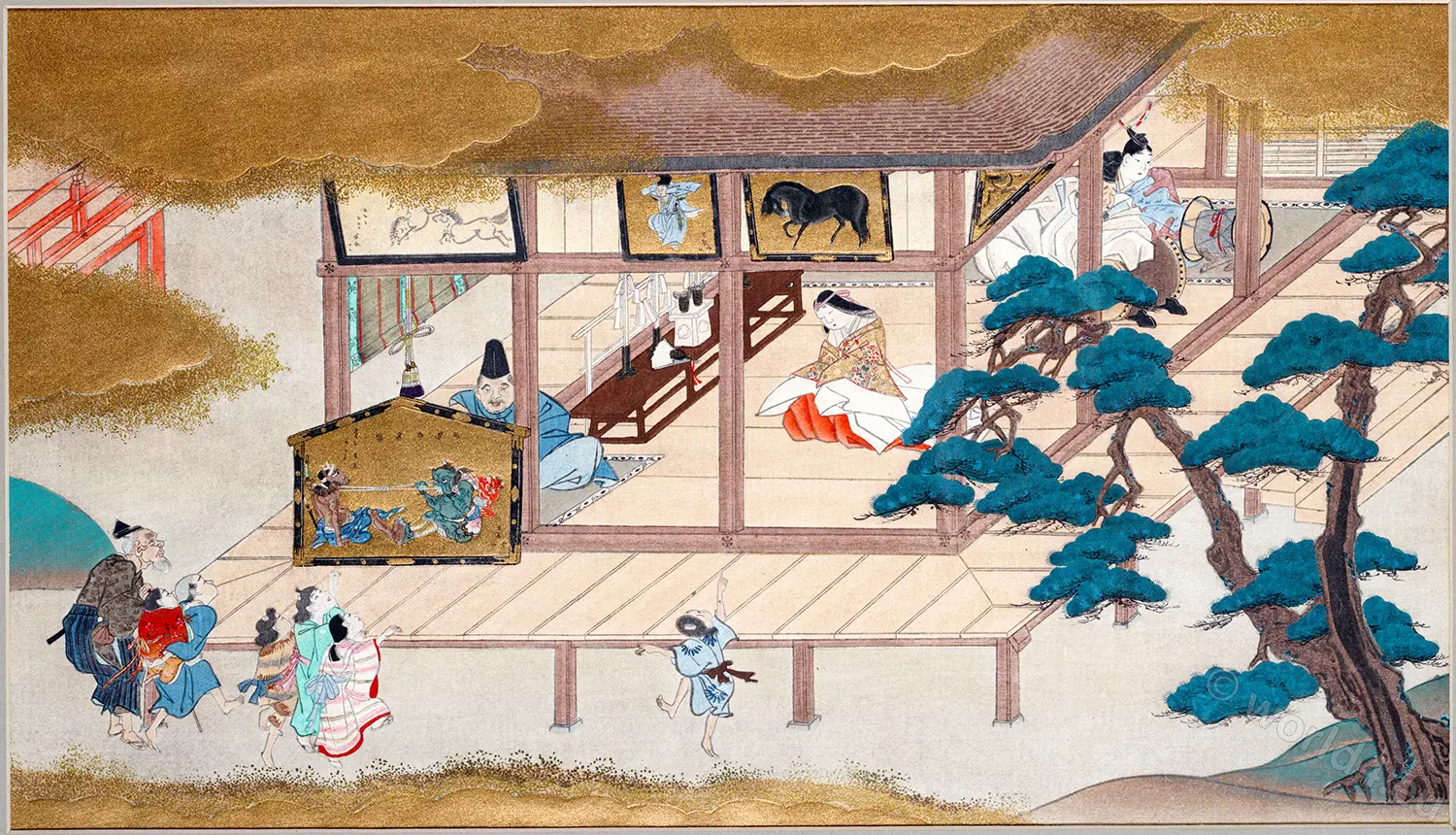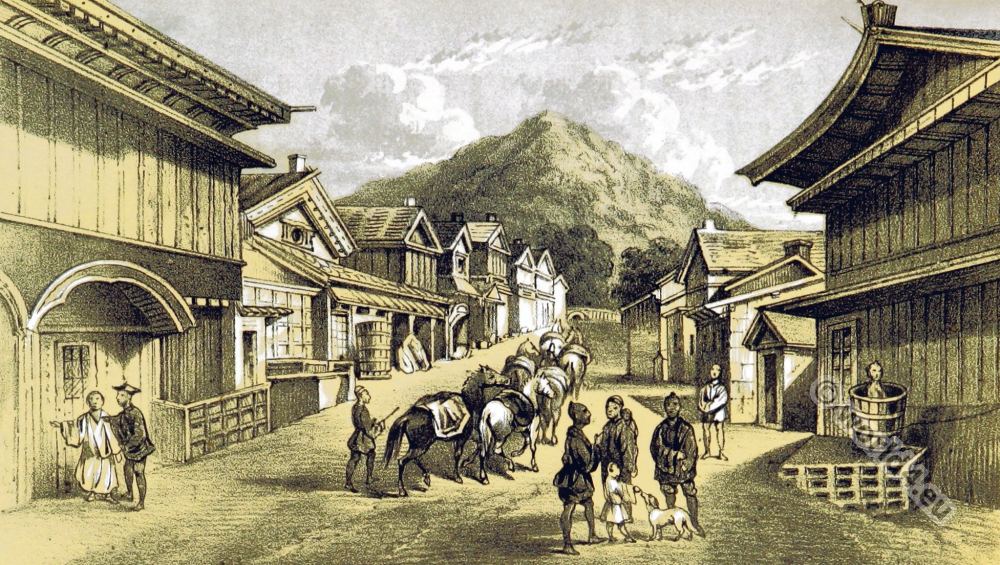TATSU. [The Dragon.]
by Alexander Francis Otto.
A fitting representation of power, symbolical of sovereignty, mysterious and omnipotent in its influence on the lives of men, is Tatsu, the foremost creature of Japanese Mythology. Its name Riyo or Riu is from the Chinese, meaning all powerful—and such it surely is; as one of the divinely constituted creatures, it has the faculty of making itself visible or invisible; of its own volition, it reduces itself to the size of a silkworm or enlarges to such proportions that all heaven and earth is filled with its presence.
Nor are the artistic and poetic conceptions of the Japanese narrowed down to a single dragon — there are many of them. The Celestial Dragon guards and supports the mansions of the gods; the Spiritual Dragon causes the rain to fall and winds to blow for humanity’s welfare; the Earth Dragon defines the courses of rivers and streams; the Dragon of Hidden Treasures watches over the hoards of wealth hidden from mankind. All these various types are known by distinctive colours, with which the Oriental associates influences favourable or inimical to men. The white dragon’s breath is believed to become gold, and the spittle of the violet dragon turns to crystal balls; but those best known seem to be the white, green, yellow, violet, red and black, and these appear innumerable times in the ornamentation of the porcelains, potteries, pictures, furniture and wood carvings of Japan and its temples.
Tatsu is often represented holding a jewel in the right fore claw, suggestive of one of the many legends that enrich Japanese Mythology, and explaining the dragon’s association with the crystal ball.
This legend, well worth recounting, runs as follows: During the reign of the Empress Jingo, the most noteworthy of all the women of Japan, ambassadors from an Emperor of China were sent to the Empress with three of China’s much-prized treasures—a bell of metal and one of wood, and a beautiful crystal ball as clear as a drop of heaven-sent dew.
After a stormy voyage, they reached the Japanese coast, but alas, the crystal ball, their most precious gift, was not to be found! Their grief was dreadful indeed, being intensified by the mystery of the jewel’s disappearance, as well as by the chagrin the situation was sure to cause. Much consultation, however, led to the conclusion that the jewel had been charmed from them by the Daughter of the Dragon, who was unable to restrain her ardent desire to possess it. The chief minister of the Empress, mourning the loss of the precious crystal more deeply than the others, and feeling the disgrace that had fallen on the ambassadors, resolved to recover it at any cost.
In an effective disguise he strolled along the shore, and soon met one of the fisherwomen of that locality. It was not long before he won her love and married her, shortly thereafter disclosing the burden of his heart, and begging her aid if she valued their future happiness. He promised that if she recovered the crystal, she would no longer be the poor and unknown ama, or fisherwoman, but a princess with a castle for a residence, nobility for her companions, and the gracious favour of the Empress for her reward.
The picture proved so winning a one that her support was gained at once, and preparations were begun for the important quest. Her life had been spent by the sea, and she could swim with the ease of a fish, and live under water as well as on land, so she agreed to dive to the Dragon Palace and seek the lost crystal.
On the completion of all arrangements, she bade her husband a fond farewell, and grasping a sword, dived into the sea, soon reaching the Dragon’s Palace where she found the wondrous ball. Starting to return, she saw that she had been discovered by the Dragon himself, who lost no time in calling to his aid all the monsters of the sea in a vain attempt to capture her. Despite a desperate resistance, she saw that it was but a question of moments when she would be overcome, and suddenly remembering that the Dragon and his fellows dared not touch a lifeless creature, she thrust the sword into her bosom, placed the crystal in the opening, and signalled to her husband with the cord provided for such use in case of danger. He quickly drew it in, when he beheld, to his consternation, the lifeless body of the faithful ama bearing the coveted jewel in her bosom.
Thus the crystal ball was recovered and borne to the Empress who heard the tale as the legend gives it to us, and in token of her appreciation of so noble a sacrifice, honoured the memory of the once humble ama with the name of Tamatorihime, the Princess of the Recovered Jewel.
Source: Mythological Japan: the symbolisms of mythology in relation to Japanese art; by Alexander Francis Otto and Theodore S. Holbrook, with illustrations drawn in Japan, by native artists. Philadelphia: Drexel Biddle, 1902.
Related: Lung. Chinese Dragons. Appearances and classification.
Chinese dragon and its cultural significance, in mythology and folklore.








